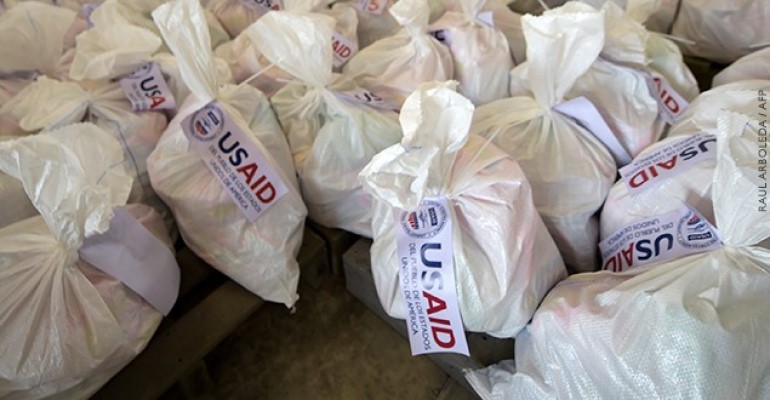Ag investments in developing countries yield economic benefits at home.
October 17, 2019

The U.S. receives broad-based economic, national security and diplomatic benefits from its agricultural assistance investments in the developing world, according to a new report commissioned by the Board for International Food & Agriculture Development (BIFAD).
U.S. agricultural exports to developing countries total $90 billion (of a total of $140 billion) annually and help generate an increase in total U.S. economic activity of $259 billion. By increasing agriculture capacity and production, agricultural aid lifts incomes in the developing world and fuels demand for goods and services abroad.
U.S.-based public research and land-grant universities play a key role in boosting agricultural production through the development of improved crop varieties and efficient agricultural practices as well as educating experts who return home after completing studies in the U.S. In 2018 alone, U.S. agriculture exports to developing countries generated an additional $259 billion in economic activity, supporting 779,000 U.S. jobs.
BIFAD is a presidentially appointed advisory board to the U.S. Agency for International Development (USAID) that advises USAID on issues concerning agriculture, higher education in developing countries and food insecurity. The Association of Public & Land-grant Universities (APLU) helps administer its operations.
With global food demand projected to increase by 50% over the next 30 years, mostly from burgeoning demand in low-income countries, bolstered investment in foreign agriculture is essential to help American farmers gain an edge in rapidly growing emerging markets, the report argues.
“A vibrant agricultural sector is fundamental to building a thriving society,” said APLU president Peter McPherson, who served as administrator of USAID from 1981 to 1987. “Thanks to agricultural development aid from USAID and others, public research and land-grant universities are able to play a vital role in advancing agricultural capacity of the developing world.”
“As an agricultural economist, I have long recognized the threat facing our planet with both a growing population and serious challenges to future food supplies,” said BIFAD chair Mark E. Keenum, president of Mississippi State University. “Finding ways to enhance food security is literally a matter of life and death. It is important to preventing conflict among nations and is in our own national security interests. It is also simply the right thing to do.”
Because the agriculture sector accounts for a large share of employment in low-income countries, increasing productivity can significantly boost income across the broader economy. With increased spending power, consumers in low-income countries can purchase higher-value goods, often on the global marketplace. U.S. farmers, in particular, have benefited enormously from rapidly growing exports to low-income countries over the past two decades.
“Research is at the core of innovations in agriculture that benefit both recipient countries and those in the U.S.,” said Shenggen Fan, director general of the International Food Policy Research Institute, which undertook the study. “Continued American investment in foreign agriculture will be vital to providing growing global populations healthy and sustainable diets.”
U.S. agricultural exports to the developing world have accounted for an outsized share of export growth in recent years. Over the past two decades, developing countries have increased their imports of U.S. commodities by 77%. Imports of high-value products have grown by 125%. Over the same period, developed economies have decreased their imports of U.S. commodities by 4% and increased their imports of high-value products by 27%.
The study also outlines a host of foreign assistance-spurred innovations that similarly benefit U.S. producers. An important part of USAID’s agricultural foreign assistance supports university-based research into improved crop varieties that boost productivity – both at home and abroad. For example, improved varieties of wheat and rice developed with such funding led to benefits to U.S. farmers worth up to $15.6 billion between 1960 and 1993. On a benefit-cost basis, a separate study found that research for wheat alone yielded a more than 30-to-1 return on investment.
Additionally, the report added to a growing body of evidence that U.S. foreign assistance supports global stability and promotes U.S. security. Foreign assistance helps alleviate hunger and poverty while improving employment in the developing world – all of which helps build more stable and self-sufficient societies.
You May Also Like


.png?width=300&auto=webp&quality=80&disable=upscale)
